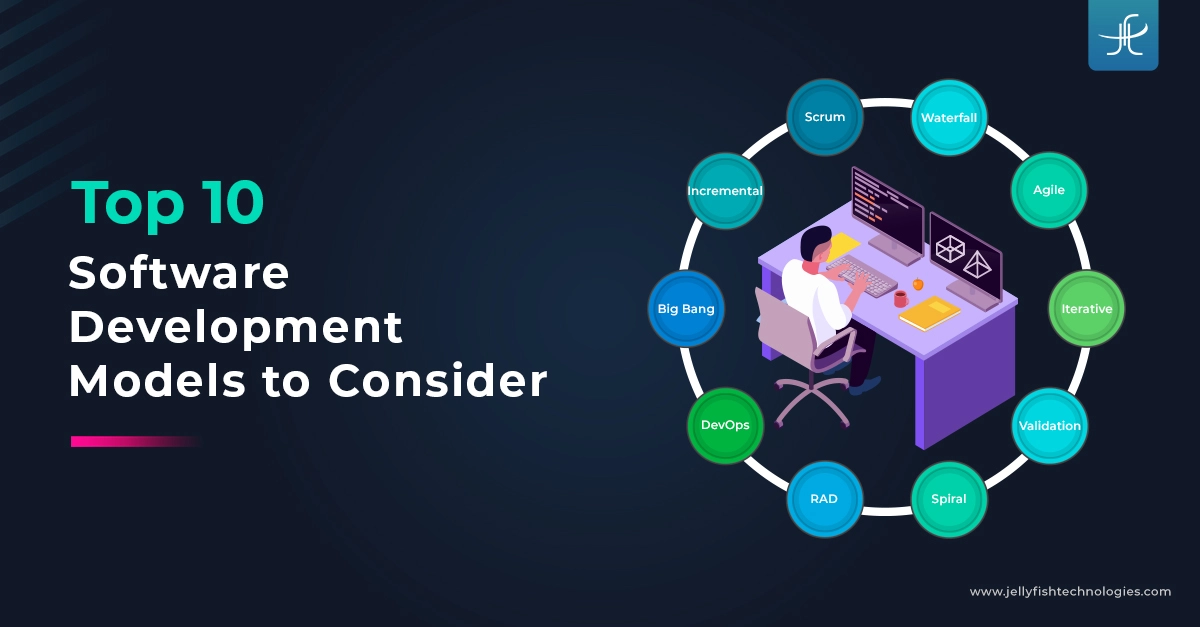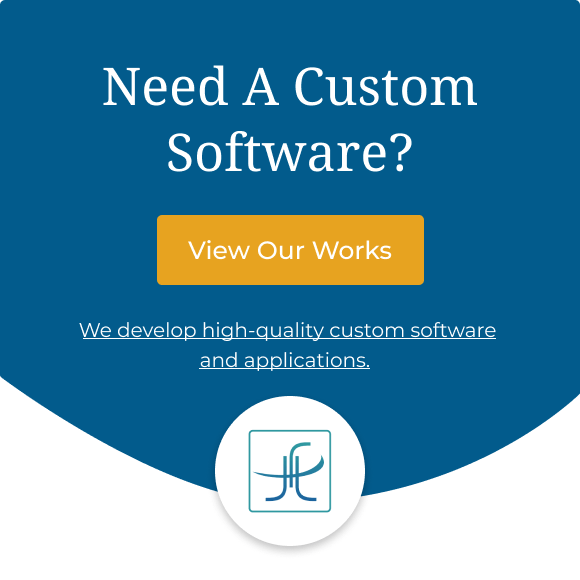Developers utilize software engineering development models, which are practical tools, to map each stage of their projects. They support project managers with process planning, cost estimation, problem-solving, and team and customer communication.
A software development model is a digital or handwritten model that describes the software development process. The models assist in giving the team and the client a visual depiction of the development process to examine. This assists them in choosing the best procedure to use for a particular piece of software, enables them to spot potential problems before they become expensive, and serves as a record of the team’s development procedure going forward.
Importance of Selecting the Right Software Development Model
When it comes to software development services, experts come across a variety of software development models. Taking into account project scope, timescale, size, budget, or engineering level, each of them directs the developer in a specific direction. When you select the best software engineering development model, it will increase team efficiency, decrease errors in the finished product, and simplify product maintenance.
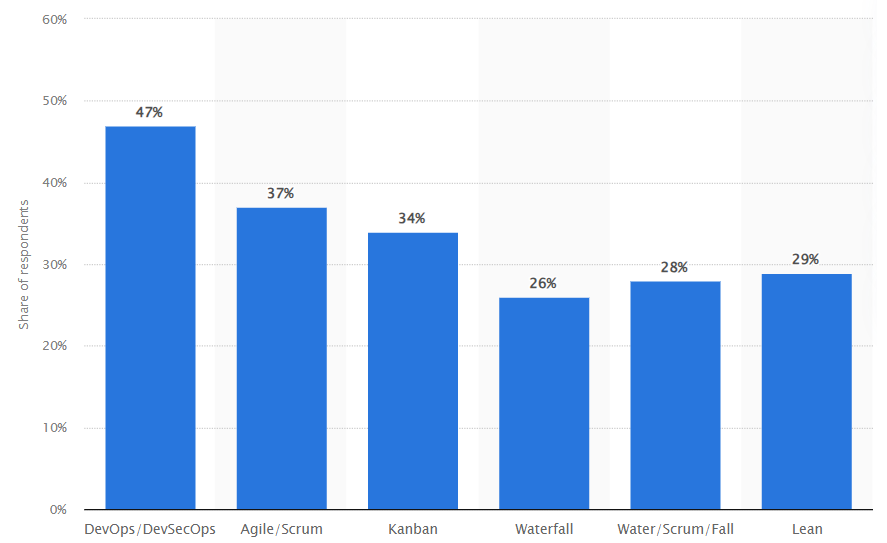
A constant difficulty in product development is selecting among a variety of models for software development companies. Not changing the model once the project has begun is beneficial for the project’s performance. Knowing the methods and techniques that various software development models employ to identify:
- How your business plans to carry out the project’s objectives
- Instructions and techniques for completing work while traveling
- Difficulties that can be solved.
How to Choose the SDLC Model That Will Suit You Best?
In order to select the best methodology for software development services, it is vital to evaluate the project stakeholders’ demands, learn more about each model, and create a list of your critical criteria. To assist you in choosing the best model to oversee the product development process, consider the following questions:
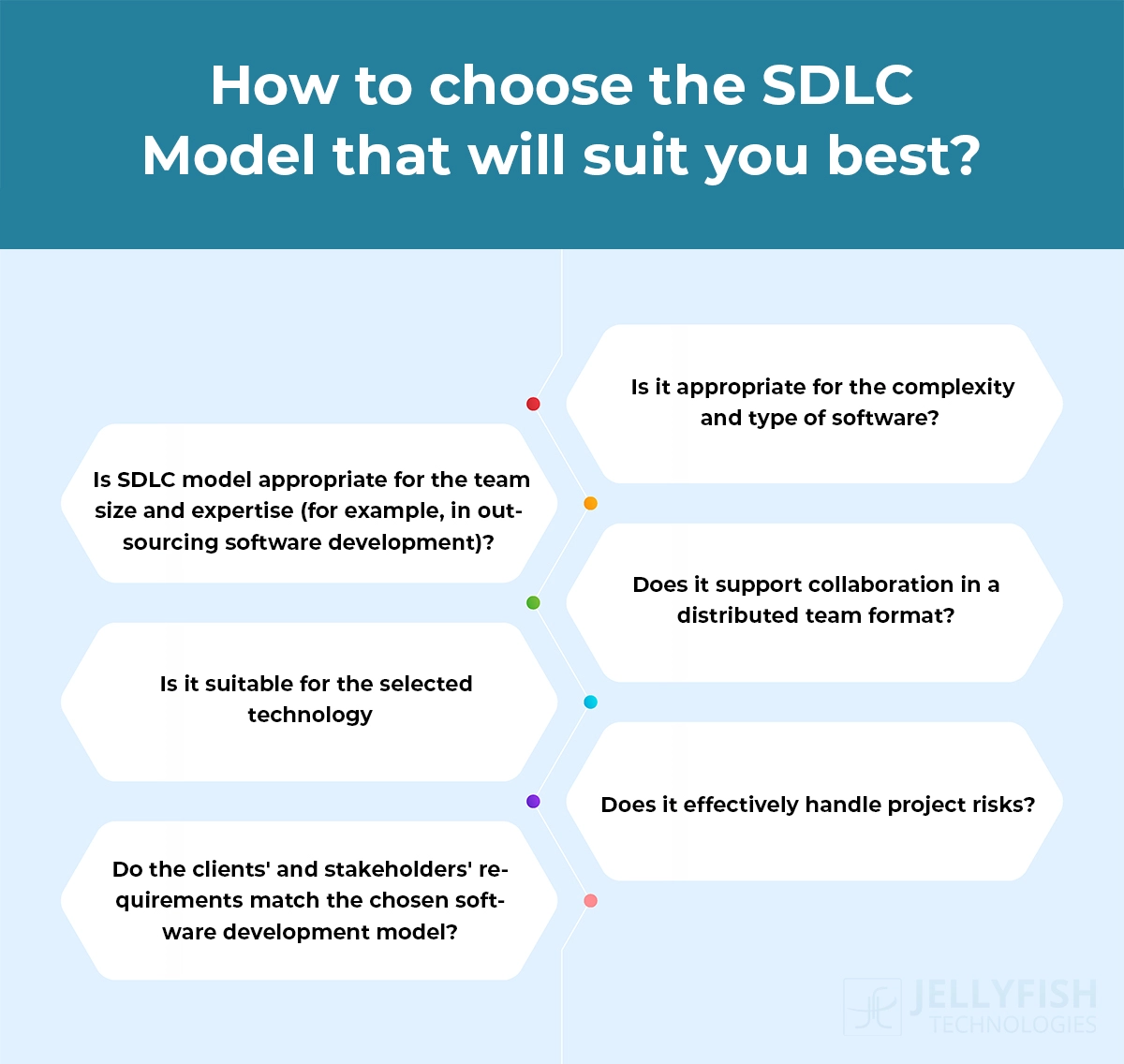
- Is the SDLC model appropriate for the team size and expertise (for example, in outsourcing software development)?
- Is it suitable for the selected technology?
- Do the clients’ and stakeholders’ requirements match the chosen software development model?
- Is it appropriate for the complexity and type of software?
- Does it support collaboration in a distributed team format?
- Does it effectively handle project risks?
Top 10 Software Development Models/methodology
1. Waterfall Model
In 1970, Winston W. Royce was the first to introduce this concept, and through time, the software industry has embraced it. The flow of this model makes it special; before beginning the subsequent phase, each stage must be completed, and the subsequent phase is only aligned to begin when the preceding one is designated as complete. The downside of the waterfall process is that it is less adaptable than Agile, which leads to hundreds of required changes being collected after the fact.
| Pros | Cons |
| Utilizes a well-defined organizational framework. | Impedes the process of incorporating modifications. |
| Establishes the ultimate objective at the outset. | Alienates end users or clients. |
| Conveys information systematically. | Postpones testing until after finalization. |
2. Agile Model
Agile is one of the most popular SDLC model techniques since it can be adjusted to every project’s needs and is focused on incremental and iterative development. Agile also prioritizes customer happiness, group decision-making, and resource- and time-saving development over many software development lifecycles (also known as sprints). In order for team members to prepare for the right stage of development prior to the deployment of the protection, this approach necessitates thorough engagement (including transparency).
| Pros | Cons |
| Enhanced performance enhancement. | Reduced predictability. |
| Facilitates collaborative efforts. | Insufficient documentation. |
| Enables adaptability and timely delivery. | Limited documented progress. |
3. Iterative Model
These software development methodologies prioritize design over planning and analysis because it takes less time, making it one of the most efficient ways to cut costs. This methodology is well-liked due to its versatility, which enables teams to integrate needs without any previous planning, developers to work on producing new versions quickly, and to give subsequent updates.
| Pros | Cons |
| Timely identification of potential flaws. | Increased resource demands may arise. |
| Simple measurement of progress. | Each subsequent phase lacks flexibility and does not overlap. |
| Convenient management of successive iterations. | Proficient talent is essential for effective risk analysis. |
4. V-Model (Validation and Verification Model)
Many individuals perceive the V-model as an evolution of the Waterfall model, as it incorporates the sequential phases initially in a downward fashion, followed by an upward progression after the coding phase. This dual-directional flow creates a V-shaped pattern, from which the model derives its name. Additionally, it is commonly referred to as the Verification and Validation model due to the presence of corresponding verification and validation phases for each stage in its process.
| Pros | Cons |
| Particularly effective for smaller to medium-sized projects. | No functional software is generated during the intermediate phases. |
| Initiating testing from the outset helps identify ambiguities early in the process. | Less suitable when requirements lack consistency. |
| Development and advancement follow a highly structured and methodical approach. | Less suited for larger and more intricate projects. |
5. Spiral Model
The Spiral model represents a risk-oriented strategy for software development. This approach primarily relies on assessing and mitigating the potential risks associated with a particular project. In pursuit of its objectives, the model incorporates elements from various methodologies, such as incremental development, the waterfall model, and even evolutionary prototyping.
| Pros | Cons |
| Well-suited for high-risk projects. | Challenges in time management may arise. |
| Maintains robust approval and documentation control. | The spiral model may potentially extend indefinitely. |
| Software development begins early in the software life cycle. | Determining the project’s end may not be established early in the process. |
6. RAD (Rapid Application Development) Model
The RAD model, short for the Rapid Application Development model, integrates rapid prototyping techniques with incremental development processes. This combination facilitates enhanced feedback loops for developers by involving customers in the prototype evaluation and progressing in an incremental manner.
Under the RAD model, customers actively oversee the ongoing system development, which enables them to promptly identify new parameters or potential deviations from the original project expectations. This approach proves especially beneficial for teams working on software projects that have stringent user interface (UI) requirements. The key focus of the RAD model is to ensure that every component of the user interface meets the customer’s expectations in terms of completeness and functionality, even if it may entail potential cost overruns or adjustments to deadlines.
| Pros | Cons |
| Reduces development time effectively. | Suitable primarily for projects emphasizing speed. |
| Enhances the reusability of components. | Management complexities arise due to multiple stakeholders. |
| Improves risk management for the final product. | Limited to constructing modularized projects. |
7. DevOps Model
DevOps, a fusion of “development” and “operations,” encompasses a set of methodologies and tools aimed at enhancing an organization’s capacity to accelerate the delivery of applications and services when compared to conventional software development approaches. This acceleration empowers organizations to enhance customer service and gain a more competitive edge in the market.
In more straightforward language, DevOps revolves around breaking down the historical divisions between separate teams responsible for development and operations. Within the DevOps framework, development and operations teams collaborate seamlessly throughout the entire software application lifecycle, spanning development, testing, deployment, and ongoing operations.
| Pros | Cons |
| Accelerated time to market. | Absence of meaningful metrics. |
| Enhanced collaboration among teams. | Added complexities with extra tools and processes. |
| Lowered risks and improved efficiency. | The cost of DevOps extends beyond financial investments. |
8. Big Bang Model
The Big Bang model represents an approach within the Software Development Life Cycle (SDLC) that commences from a state of minimal pre-planning. Among SDLC methodologies, it stands out as the most uncomplicated one, demanding little upfront strategizing. Nonetheless, it necessitates substantial financial investment and extensive coding efforts, resulting in a lengthier development timeline.
The nomenclature “Big Bang model” draws a parallel to the cosmic event known as the “Great Big Bang,” which initiated the formation of galaxies, stars, and planets. Similarly, this SDLC model amalgamates time, labor, and resources to create a product. The product evolves incrementally in response to customer requirements, albeit there may be discrepancies between the final product and the initial specifications.
| Pros | Cons |
| An effective educational tool for newcomers and students. | Unsuitable for complex and object-oriented projects. |
| Requires minimal to no planning. | Not a suitable choice for lengthy and continuous projects. |
| Provides developers with flexibility. | Involves high levels of risk and uncertainty. |
9. Incremental Model
In the incremental model, the software is partitioned into distinct modules that can be progressively developed and delivered. This approach primarily focuses on the immediate increment, devoid of extensive long-term planning. Consequently, it allows for the flexibility to modify a version to align with user requirements as they evolve.
| Pros | Cons |
| Improved quality and faster delivery | Difficulty in planning |
| Enhanced collaboration | Increased cost and complexity |
| Greater quality and better flexibility | Risk of failure |
Scrum
Scrum stands as an agile software development methodology that operates on iterative and incremental principles. It prides itself on adaptability, speed, flexibility, and effectiveness within the agile framework, all geared towards providing ongoing value to the customer during the project’s development phases.
At its core, Scrum strives to meet customer needs by fostering transparent communication, promoting collective responsibility, and ensuring continuous progression. The development process begins with a high-level concept of what needs to be constructed, followed by the detailed refinement of a prioritized list of features (known as the product backlog) that align with the product owner’s objectives.
| Pros | Cons |
| Demonstrates adaptability and flexibility. | Demands extensive training. |
| Fosters creativity and innovation. | Best suited for small teams. |
| Enhances transparency, resulting in higher-quality work. | Challenging to integrate with a traditional project management approach. |
Which Software Development Model Works Best for You?
While the market is crawling with a plethora of Software development models, choosing the right kind is significant. Based on your requirements, we present to you some stats that will provide insight into the kind of model firms are opting to get the best results.
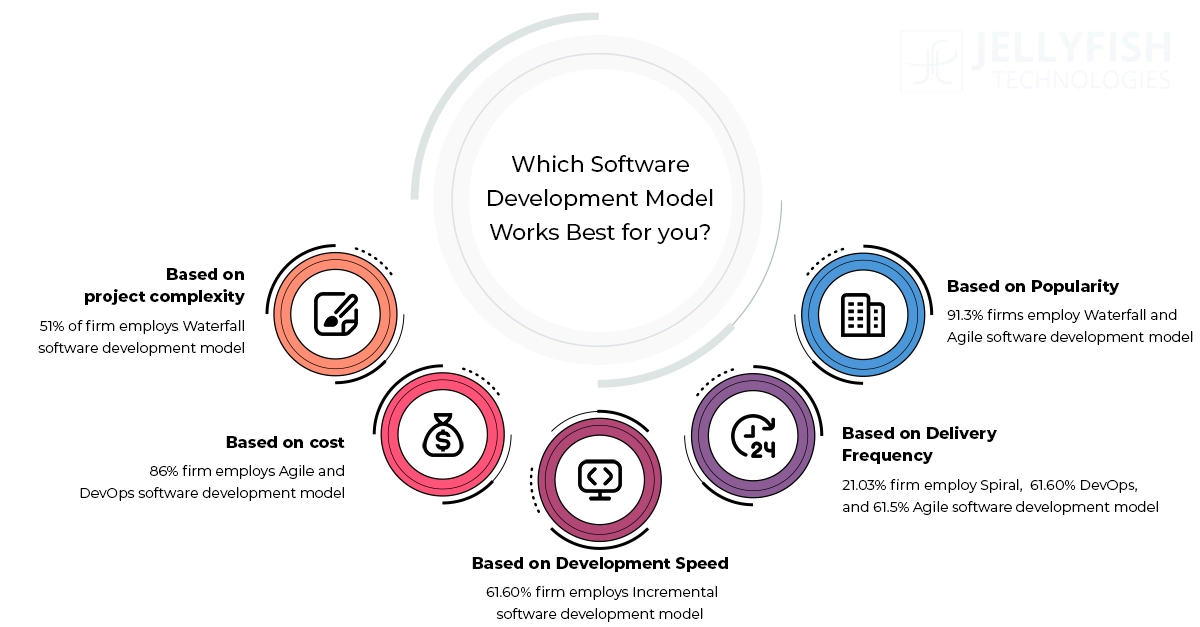
Based on Project Complexity |
51% of firm employs a Waterfall software development model |
Based on Cost |
86% of firm employs Agile and DevOps software development model |
Based on Development Speed |
61.60% of firm employs an Incremental software development model |
Based on Delivery Frequency |
21.03% of firms employ Spiral, 61.60% DevOps, and 61.5% Agile model |
Based on Popularity |
91.3% of firms employ Waterfall and Agile software development model |
Conclusion
Developers employ various software engineering development models to guide their projects, aiding in process planning, cost estimation, problem-solving, and communication with teams and customers. These software process models provide a visual representation of the development process, helping teams and clients make informed decisions and identify potential issues early on. Choosing the right software development company or model is crucial for project success, as it impacts cost, team efficiency, reduces errors, and simplifies maintenance. The article discusses popular software development models, including Waterfall, Agile, Iterative, V-Model, Spiral, RAD, DevOps, Big Bang, Incremental, and Scrum, highlighting their characteristics and suitability for different project scenarios.

